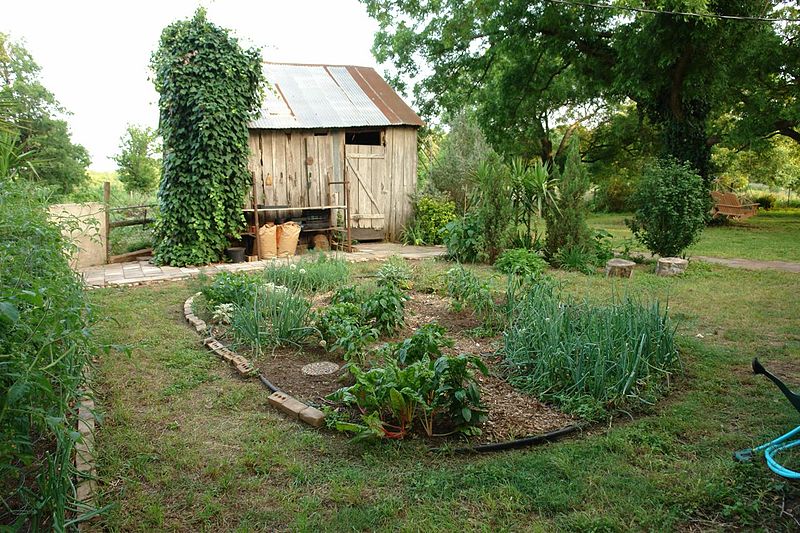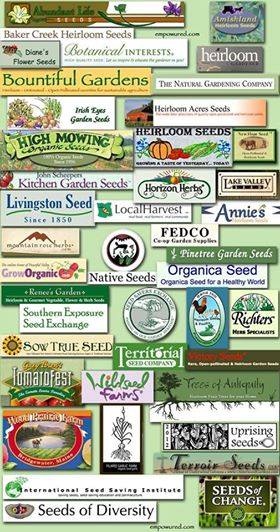Table of Contents[Hide][Show]

Seed catalogs for the upcoming growing season are arriving in mailboxes across the Northern Hemisphere with home growers everywhere starting to plan which seeds they will sow in freshly composted garden. A positive trend in recent years is the growing number of gardening enthusiasts choosing to plant gardens using organic and/or heirloom seeds.
What most of these home gardeners don’t realize is that corporate behemoth and GMO titan Monsanto has been gobbling up the seed market faster than a caterpillar can munch a tomato plant! With one fell swoop in 2005, Monsanto grabbed approximately 40% of the US vegetable seed market with its acquisition of Seminis.
This means that a home gardener could unknowingly be supporting the development and proliferation of genetically modified crops if the seeds used are from Seminis. In addition, Monsanto now apparently owns the trademark for many of the names of the heirloom seed varieties themselves!
Planting a sustainable home garden is much more than just choosing certified organic seeds and seedlings, eschewing pesticides/herbicides and using organic compost. This is because Monsanto has cleverly positioned itself to make money off the home gardening trend.
Does this mean that even if you buy organic or heirloom seeds from a completely independent company some of your purchase might be supporting the bad guys?
Yes, it does.
Surprise!
Home gardeners would do well to bone up on where to purchase their seeds so they aren’t inadvertently doing business with companies that maintain a working relationship with Monsanto-Seminis or were acquired by them.
Buying Organic or Heirloom Seeds Without Supporting Monsanto
Here are the recommended steps for the 2014 growing season for those who want to truly strike a blow for sustainability in every way with their home gardens:

Avoid buying from the seed companies affiliated with Monsanto. Here’s a list of these seed companies by location (enter you zipcode for a list of dealers to avoid).
- Buy from companies Monsanto HASN’T bought and are not affiliated or do business with Seminis: The graphic above indicates numerous companies that are worthy of your patronage as compiled by the International Seed Saving Institute. Please note that this many not be a complete list. If your seed company does not appear, just be sure to clarify with the owner about any potential affiliation with Monsanto-Seminis before buying from them.
- Avoid buying heirloom varieties for which Monsanto owns the trademark.
- Ask seed companies if they have taken the Safe Seed Pledge. Here’s a list of companies that have taken the Safe Seed Pledge and believe in responsible plant genetics. These are good companies to buy from.
Background on Monsanto’s Quest for World Seed Domination
Monsanto’s corporate quest is clearly to make money on each and every one of us whether we choose to eat supermarket frankenfoods produced with abominable, patented GM crops or carefully plant and tend an organic garden at home. Here’s some background information on the subject you may find interesting as well as enlightening:
If you are a home gardener and have information to contribute regarding these steps, please add to the discussion in the comments section. Also, please spread the word via gardening forums you may participate in that folks need to be very careful when seed sourcing for their spring gardens this year else they might be unknowingly supporting Monsanto.
Let’s make this the year when Monsanto’s grip on the worldwide seed market loosens and the movement to seed sustainability gains momentum!
Update
The day after this article was originally published in 2013, the CEO of a large GMO soybean seed company in the Midwest emailed me complaining that the article was short-sighted and insisting that Monsanto is helping feed the starving people of the world. He even went so far as to say that GMO crops are “proven safe”. Click here for the text of this CEO’s entire email plus my written reply.
I have also received email complaints from two other seed companies, one in Canada and one in Arkansas, that do business with Monsanto-Seminis and were offended by what they viewed as inaccuracies in the post. In response, I have adjusted the text slightly and moved linked sources to within the text rather than only listed at the end to make the message of the post as clear and precise as possible so as to not result in any consumer confusion over the information.
I have received no complaints about this article from seed companies completely independent of any affiliation or ties to Monsanto-Seminis.
More Information
Why I Avoid Organic Hydroponic Produce
The Hydroponic Invasion of USDA Organic
Heirloom vs Hybrid Produce
Photography Credit








Have you heard of a Tower Garden? Its a simple way to take control of your garden.
Buy your organic, heirloom, open pollinating seed from whatever company. Then save your own seeds each year. That’s what I do..
I am not sure where you are getting your info,
but great topic. I needs to spend some time learning more
or understanding more. Thanks for great info I was
looking for this info for my mission.
Thanks, it was a bit confusing. We love Botanical interests…great local company…grows at altitude.
Thank you … made my rough day!
Curtis
Wow, that is a whole lot of comment and argument and a free for all. Discussions are nice when everyone can play nice. My post here is for the author…though y’all can feel free to have fun with it too. I believe something was left out. I believe there should have been some mention of finding out what your neighbors are growing. It does little good to to enforce a no Monsanto, no GMO buying policy with regards to seeds if your neighbor is growing stuff that is GMO; cross contamination will occur with pollination and may contaminate your plants and future seed. I believe I read that the common pollination zone is up to 10 miles in radius so even if you are growing organic heirloom seed and saving the seeds they may not be pure if the guy 5 miles down the road, the old lady across the street, or the guy with next patch over at the community garden is not as judicious in his seed choice. So far as I know there is no way to control what is planted around me.
The article lists “habanero” as being an heirloom variety whose name has a trademark held by Monsanto. I highly doubt this is the case as their is no mention of it on the USPTO website, and the fact that the name “habanero” has been used for centuries for this variety of pepper. It is a generic name. “Red Savina Habanero” is in fact still trademarked though.
I searched for a few other names in the USPTO trademark database, and none of them came up as valid trademarks.
Thank you for this vital info Sarah!
http://www.seedsnow.com this is the site I buy our seeds from!